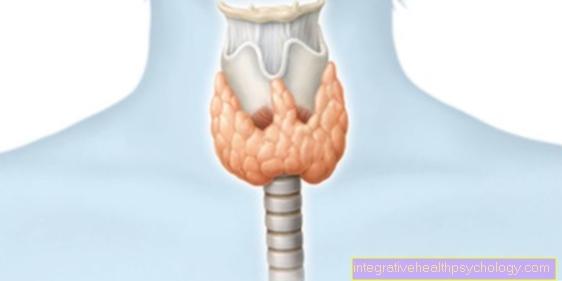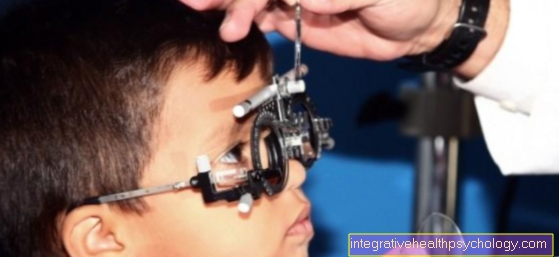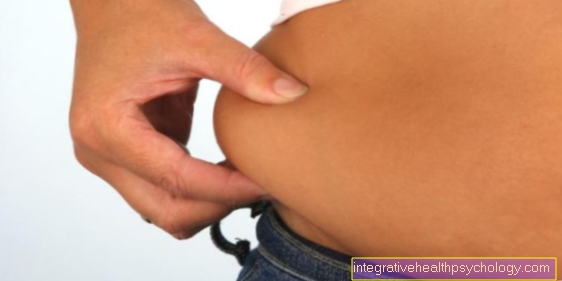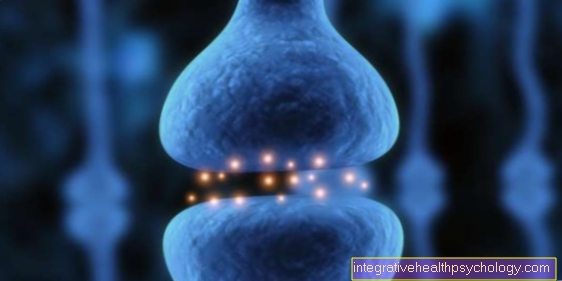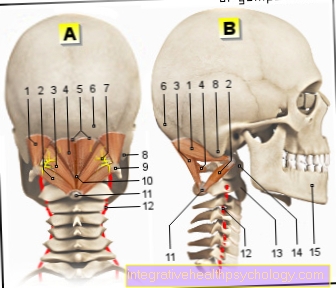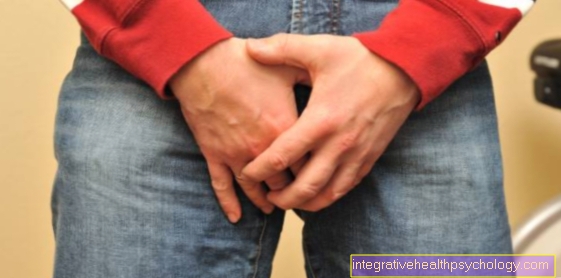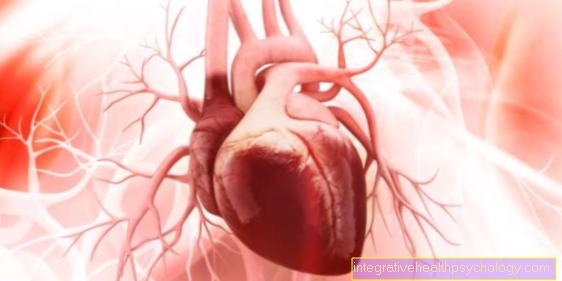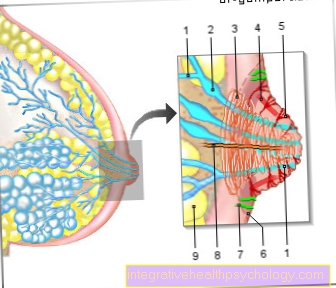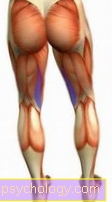Fistula on the navel
What is a fistula in the belly button?
A fistula is a duct that does not naturally exist between a hollow organ such as the intestine and another hollow organ or the surface of the body, for example on the navel.
The fistula is a thin tube that is lined with surface cells (epithelium). If the origin of the fistula is in the intestines, feces can run out through it. The fistula can also become inflamed, causing pus to form. A fistula on the intestine should be examined carefully and, if necessary, removed by surgery. In addition, it should be investigated what the cause of the fistula is.

causes
The causes that lead to the formation of a fistula are in most cases inflammatory processes or the consequences of tissue damage.
For example, in the case of an encapsulated purulent inflammation (abscess), a fistula can develop in a hollow organ such as the intestine or on the body surface such as the navel. In this way, the body tries to remove the pus from the focus of inflammation.
The chronic inflammatory bowel disease Crohn's disease is another possible cause of fistulas. These can originate from any part of the intestine and grow into the belly button, bladder or vagina, among other things. In addition, an operation on the bowel can lead to the development of a fistula on the navel.
In addition, there are also congenital fistulas such as the uracheal fistula, in which a connection between the bladder and the navel remains due to a lack of closure, through which urine can escape.
You might also be interested in this topic: Inflammation of the belly button
diagnosis
In order to diagnose a fistula on the navel, the first thing that is important is a physical examination and a medical interview (anamnesis).
If there is a leak of stool from the belly button, it is indicative of a diagnosis of a fistula originating from the bowel. However, purulent inflammation alone does not necessarily have to be caused by a fistula. If it is suspected that there may be a fistula on the navel, the doctor may try to locate the opening of the fistula with a small probe.
Another way to make the diagnosis is through imaging. For this purpose, a contrast agent can be injected into the opening of the fistula and then a picture can be taken using computed tomography. This allows the size and spread of the fistula to be recognized at the same time, which is important for surgical removal.
You might be interested in this topic: Fistula in the intestine
Complications
Fistula in the bladder
A fistula on the belly button that emerges from the bladder may be present in newborns.
During the development of the child in the womb there is a temporary connection between the child's bladder and the navel (urachus). However, this usually regresses and closes up. In the event of an abnormal development, however, the gait can persist (urachus fistula), which manifests itself in the fact that urine runs out of the child's navel. In such a case, the fistula should be removed promptly by a small surgical procedure, otherwise there is a risk of serious inflammation of the urinary tract and kidneys.
In adults, the fistulas in the bladder usually start from the intestines. As a result, feces and intestinal bacteria from the intestines can enter the bladder and cause inflammation there. In order to detect a bladder-intestinal fistula in a suspected case, a simple diagnostic measure can be carried out: In the so-called poppy seed swallow test, the patient consumes about 100 grams of poppy seeds. The urine is then collected and sieved. If poppy seeds are found there, a connection between the intestines and bladder is proven.
Fistula in the vagina
A fistula on the belly button does not usually start from the vagina.
However, a fistula from the intestines can grow into the vagina. This is usually expressed in the fact that feces, which get from the intestine via the fistula into the vagina, emerge from the vagina. In addition, the intestinal bacteria can lead to inflammation of the fistula or vagina, which is expressed as a purulent, foul-smelling discharge. The gynecologist should be consulted promptly in the event of such complaints. In some cases, the doctor can see the exit of the fistula through the vaginal examination. He can also issue a hospital admission so that the fistula can be visualized using imaging methods and, if necessary, the treatment can be carried out.
You can read more information about fistulas in the genital area in our article: Fistula in the genital area - Everything you should know
therapy
In most cases, surgery is required to treat a fistula on the belly button. There is no alternative form of therapy that promises success. The aim of treatment is the complete removal of the fistula duct and the closure of the unnatural connection path. There are various surgical procedures available, the selection of which depends on the cause and the organs involved.
Often, a single procedure to treat the fistula is not enough because the fistula cannot be completely removed or the fistulas develop again. Therefore, a follow-up check is an important part of the treatment of a fistula on the navel.
Can a fistula also heal on its own?
A fistula in the intestine usually cannot heal on its own. Only an acute inflammation of the fistula can, in the best case, heal without therapy (through the body's own defense system).
A fistula that is noticeable due to symptoms such as inflammation should, however, in most cases be surgically removed, as it can become inflamed again at any time, which in the worst case can be life-threatening.
Also read: Fistulous duct
forecast
Depending on its location and size, a single fistula on the navel can be treated well by surgical removal in many cases, so the prognosis is good. This is particularly dependent on whether all parts of the fistula could be removed during the procedure.
If the operation could not completely remove the fistula, a new fistula can develop from the remaining parts.
The prognosis also depends on the cause of the fistula on the belly button. The prospects for a fistula as a result of an intestinal operation are better than for a disease in which fistulas can occur again and again, such as Crohn's disease, a chronic inflammatory bowel disease.



